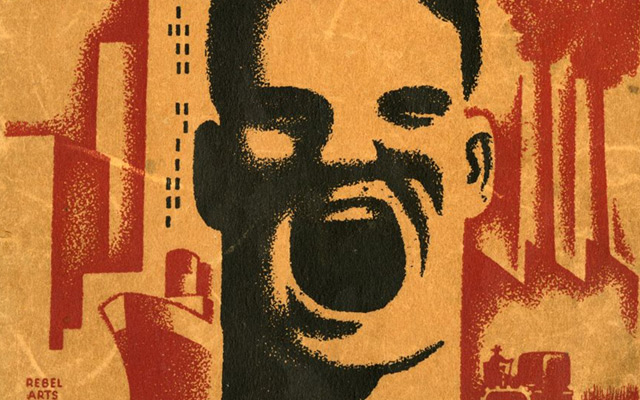List of Saudi Arabian guests
- Title
- List of Saudi Arabian guests
- Description
- List of guests invited aboard USS Quincy (CA-71) during negotiations between President Franklin D. Roosevelt and His Majesty, King Saud [Abdul Aziz Ibn Abdul Rahman al Faisal al Saud] of Saudi Arabia. The event took place in the Bitter Lake, in the Suez Canal, during which FDR and Saud drafted a postwar alliance between the United States and Saudi Arabia.
- Date
- February 12, 1945 - February 14, 1945
- Original Format
- manuscripts
- Extent
- 20cm x 26cm
- Local Identifier
- 0734-b1-fc
- Subject(s)
- Quincy (Cruiser)
- United States--Foreign relations--Saudi Arabia
- World War, 1939-1945--Diplomatic history
- Saudi Arabia--Foreign relations--United States
- Spatial
- Location of Original
- East Carolina Manuscript Collection
- Rights
-
This item has been made available for use in research, teaching, and private study. Researchers are responsible for using these materials in accordance with Title 17 of the United States Code and any other applicable statutes. If you are the creator or copyright holder of this item and would like it removed, please contact us at als_digitalcollections@ecu.edu.
http://rightsstatements.org/vocab/InC-EDU/1.0/ - Permalink
- https://digital.lib.ecu.edu/35964
- Preferred Citation
- Cite this item
- This item
-
 List of Saudi Arabian guests
List of Saudi Arabian guests
- My Collections Login
- Printable Feedback Form
- Found in theme/project
-
 Military History
Military History
-
 Military History: World War II
Military History: World War II
-
 Politics and Government
Politics and Government
-
 Special Collections Staff Picks
Special Collections Staff Picks
- Location of Original
- David L. Byrd Papers from the East Carolina Manuscript Collection
- View all digitized items from the David L. Byrd Papers
Related Search Results
Public access is provided to these resources to preserve the historical record. The content represents the opinions and actions of their creators and the culture in which they were produced. Therefore, some materials may contain language and imagery that is outdated, offensive and/or harmful. The content does not reflect the opinions, values, or beliefs of ECU Libraries.
Contact Digital Collections
If you know something about this item or would like to request additional information, click here.
Comments
Comment on This Item
Complete the fields below to post a public comment about the material featured on this page. The email address you submit will not be displayed and would only be used to contact you with additional comments or questions.



On his return from the Yalta Conference in February 1945, President Franklin D. Roosevelt, met King Saud [Abdul Aziz Ibn Abdul Rahman al Faisal al Saud] of Saudi Arabia to establish a postwar alliance between the United States and Saudi Arabia. The Saudis needed to find a new ally to replace the rapidly weakening Royal Navy, which had protected Saudi independence for decades. The Americans wanted to ensure a growing and reliable source of oil to ensure the postwar recovery of the world economy. The meetings took place, during 12-14 February, aboard the American cruiser USS QUINCY (CA-71) which lay at anchor in the Great Bitter Lake portion of the Suez Canal. Despite the dissimilarities between the sides, the agreements which emerged have proved highly successful. The US agreed to defend Saudi independence and the Saudis agreed to be a reliable source of energy for the world. The agreement hammered out at the QUINCY meetings remain in effect to this day, despite serious misgivings on both sides, and recurrent tensions over the policies of each nation.<br><br>The displayed document, headed “Saudi Arabian Guests February 12-14, 1945”, lists the members of the entourage which accompanied King Saud during his stay aboard the QUINCY. It was published to help the ship’s crew check the identity of the visitors. The list was preserved by David L. Byrd, who was a member of the US Naval Academy’s class of 1941 and junior officer aboard the QUINCY. He donated the David L. Byrd Papers to East Carolina University in 1996.<br><br>The King’s named entourage makes very interesting reading. It includes several expected members: the King’s brother and sons; his ministers and counselors, his chaplain, and his physicians, various tribal representatives, and their various assistants, interpreters, and specialists. However, the list also has a medieval quality in that it includes the King’s astrologer and fortune-teller, his food-taster and caterer, his chamberlain and valet, the Royal purse-bearer, and two ceremonial coffee-servers. Even more interesting, however, are the unnamed members of the entourage, which included 10 guards armed with sabres and daggers, 3 valets, one for each of the royals, and “9 Miscellaneous slaves: cooks, porters, scullions” a total of 48 individuals. Reading the list, one has to wonder what the QUINCY’s crewmen, especially the African Americans among them, might have thought about the proceedings. Nearing the end of a great World War to defeat enemies whose stated goal was to enslave the world, the American president was welcoming slaves aboard an American warship, making an alliance with their masters, and then permitting the slaves to be taken off the ship, without making any effort to free them.